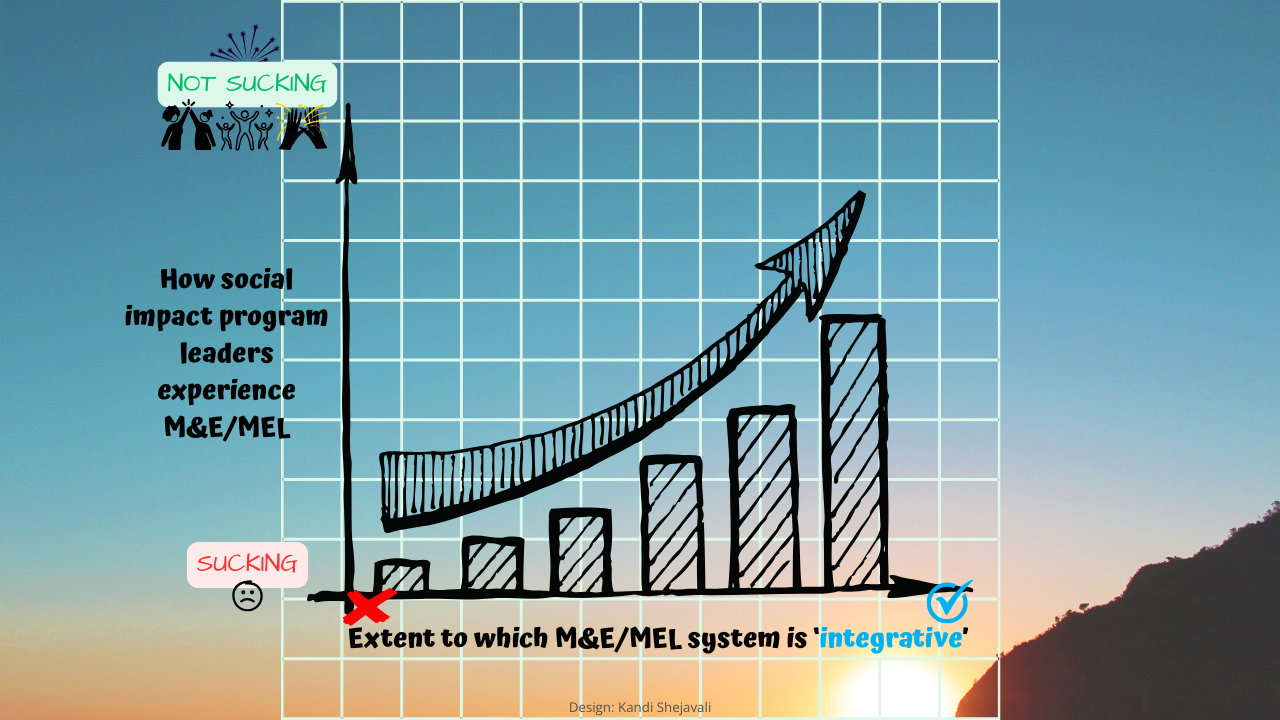“If you don’t know where you are, you don’t know where you’re going”: the pivotal role of baselines in M&E
Apr 01, 2024
“If you don’t know where you are, you don’t know where you’re going,” said the sailor
As a sailor friend of mine recently recounted his latest adventures at sea, he said something that got me thinking about the role of baselines in monitoring and evaluation (M&E). He said that in his profession, when it comes to establishing the direction in which to take a sailing vessel, the mantra is: “If you don’t know where you are, you don’t know where you’re going”.
In other words, if you don’t determine your boat’s geographic position at the start, it’s impossible to chart the course for where you want to sail. Set off without accurately establishing your position, and you risk ending up where you never intended to go – if you even get there! And along the way, you could end up running into hazards such as rocks and other obstacles that you would have been able to avoid had you mapped out the course properly from your starting point to the intended destination.
The parallel in monitoring and evaluation (M&E) for social impact programs was so evident that it literally drew itself in my mind. (Okay, not literally, but you know what I mean!) And it’s worthy of discussion here because, among other things, it helps resolve one of the key challenges that leaders of social impact programs are confronted with:
- how to set clear program objectives, enhance accountability, and credibly demonstrate the value of their programs.
This article covers the basics of baselines in M&E, the role of baselines in social impact program planning and program assessment, how baselines help enhance accountability, support program steering, and strengthen program communications.
Drawing a parallel between the sailor’s expression and M&E: the basics of baselines
How does the sailors’ navigation mantra relate to M&E? Let’s break it down by the two parts of the mantra, shall we?
Part 1: “If you don’t know where you are…”
M&E is about measuring, assessing, and reporting on results (in this case, of social impact programs). To robustly measure, assess, and report on program performance, you have to know what the situation is – or was, if you’re playing catch-up – at the start of the program. This is called the baseline situation.
More specifically, you have to understand the nature and magnitude of the ‘problem’ – or opportunity for change, as I prefer to call it – that your social impact program aims to address. That ‘opportunity for change’ will, at least in part, be reflected in the values of certain indicators, quantitative or qualitative, that help describe the baseline situation and identify gaps (ideally, this would be done in the context of an appropriately-designed and -implemented needs assessment). The values of those indicators are called baseline values.
The baseline situation and relevant indicators’ baseline values are fundamental in M&E. They tell you where you’re starting from, thus also making up the starting point for measuring your program’s performance and assessing the progress made towards the intended outcomes and impact.
To link back to the sailing mantra, the baseline situation is the “where you are” part of the expression.
Part 2: “…you don’t know where you’re going.”
The baseline situation and relevant indicators’ baseline values also help serve as a point of reference for establishing the goals of social impact initiatives. Baselines are important not only in setting realistic targets and objectives for the initiative – the “where you’re going” bit of the sailors’ mantra – but also in tracking and assessing progress along the way. This is because follow-on changes can then be compared with the original situation. (Related to the latter point, baseline values also inform the mathematical calculation of progress towards target values.)
The pivotal role of baselines in program planning and program assessment
By now, the enormous value of baselines as a tool to inform and enhance the planning, monitoring, and evaluation of social impact programs should be starting to emerge. Aside from describing the situation that your program seeks to address and informing its activities, baselines provide a key reference point for establishing program objectives, tracking of performance against targets or established benchmarks, and assessing program effectiveness.
Enhancing accountability and learning
In addition to supporting the program planning and assessment, baselines help enhance accountability and learning.
By reporting on program performance in the context of the baseline situation (and related targets and/or benchmarks), program leaders demonstrate an elevated level of accountability, owning their responsibility for delivering results. This is critical for building trust not only with program funders but also program participants and program partners.
Furthermore, baselines enable meaningful measurement and interpretation of changes and trends over time. With areas for improvement and innovation illuminated in the context of the baseline situation, program learning is promoted. This, in turn, facilitates evidence-based program decision-making and resource allocation – thus, informed program steering is enabled and the program’s ability to create the desired impact enhanced.
Strengthening communications and demonstrating program value
Reporting on program performance in the context of the baseline situation also allows for credible and compelling storytelling about program achievements. It’s not for nothing that the stories we find most engrossing often follow the classical three-act structure – setup, confrontation, and resolution.[1] Without a good setup “to establish the main characters, their relationships, and the world they live in” (Wikipedia, 2024), the rest of the story loses meaning. Consider baselines your setup. They put your program’s activities and results into context, enhancing your ability to tell a compelling story and credibly demonstrate program value.
Recap – and then it’s over to you!
In M&E, like in sailing, “if you don’t know where you are, you don’t know where you’re going.” Baselines are a cornerstone of effective M&E, helping to inform and drive meaningful social impact. Harness their power, and you’ll facilitate program planning and assessment, enhance accountability and learning, and better demonstrate your social impact program’s value.
But to really bring this to life in your project’s M&E system, action is needed – so take it!
Reflect on the role of baseline values in your M&E practices and document your insights. Then follow up with any steps necessary to ensure that the baseline situation that your program aims to address is well understood and that you have baseline values for all relevant indicators (if you’d like a deeper dive into how to establish baselines, let me know!). Document further action steps to take to integrate baseline information into your reporting and other program communications as well as into review and reflection sessions for continuous improvement.
And if you could use help in setting up baselines and other aspects of performance measurement and reporting for your social impact program, book a NO-SALES call with me to discuss your M&E challenges, fears, dreams, and goals.
Update of 31 May 2024: If this article was of value to you or if you’d like to share your related action-taking experience, please leave an emoticon reaction or comment at the bottom of this LinkedIn post or write to me by hitting ‘reply’ to any of RM3’s emails (and if you’re not receiving our emails, join the list by signing up here).
References:
Wikipedia, “Three-act structure” (version of 26 February 2024, at 12:45 UTC). Available at: https://en.wikipedia.org/wiki/Three-act_structure (accessed: 1 April 2024).
Photo credit:
Dunamis Church on Unsplash
Suggestion for how to cite this article (using APA 7 style):
Shejavali, K. (2024, April 1). “If you don’t know where you are, you don’t know where you’re going”: the pivotal role of baselines in M&E. Blog article. RM3 Consulting. Available at: https://www.rm3resources.com/blog/role-of-baselines-in-program-performance-measurement (accessed: [insert the date that you last accessed this article]).
[1] The three-act structure aligns with the three logical parts of a story: before the main action; during the main action; and after the main action.





